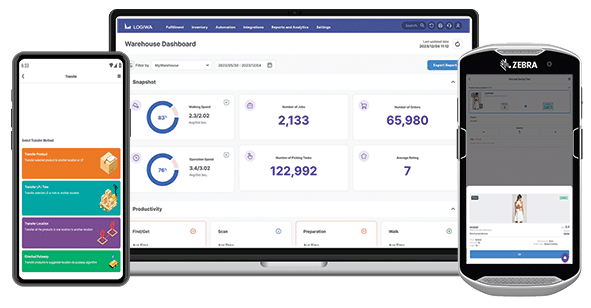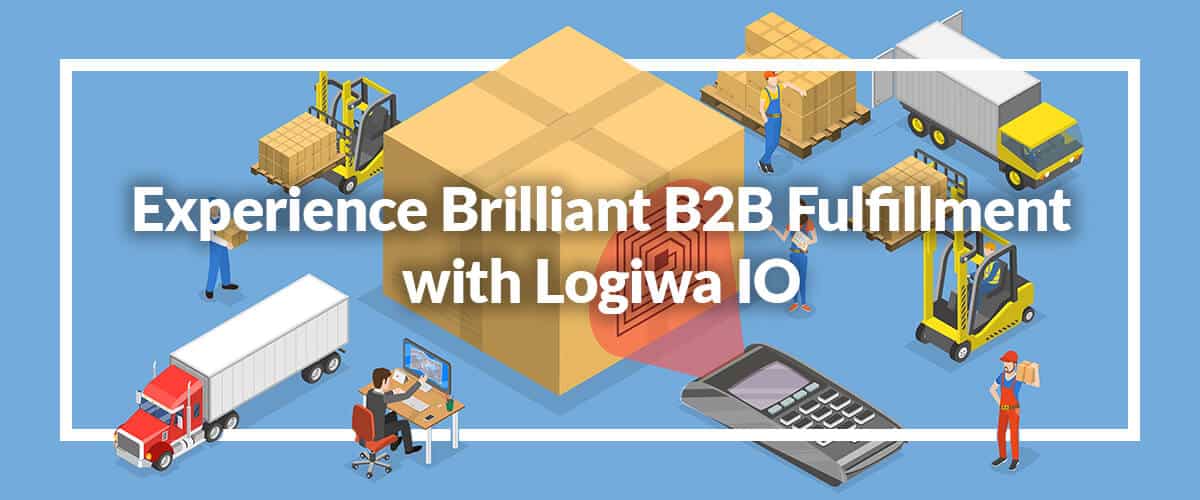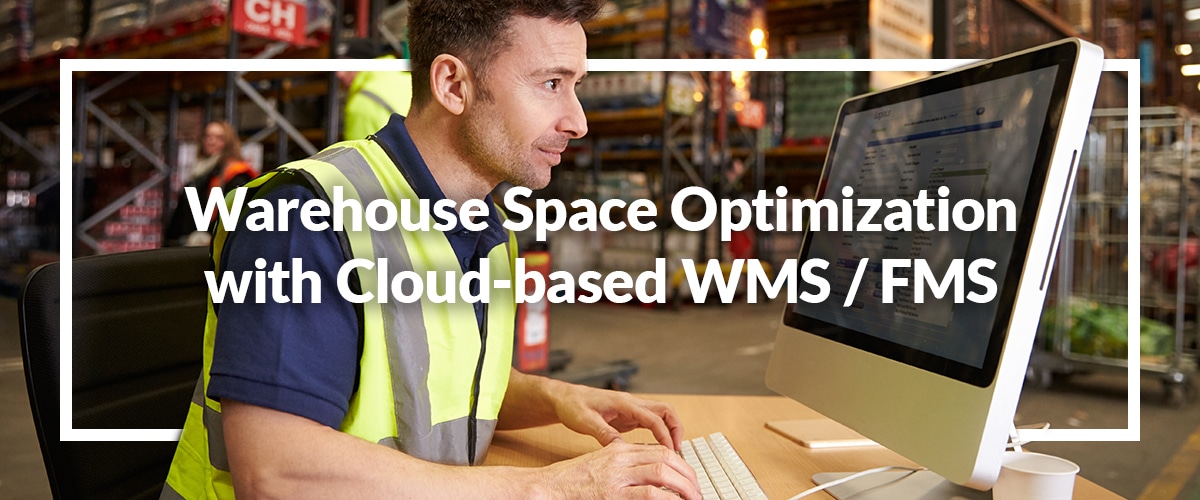Inventory Tracking: The Warehouse Operator’s Key to Success
Originally published on October 20, 2022 by Logiwa Marketing, Updated on February 15, 2024
What is the one thing you need to run a successful business as a warehouse or fulfillment center operator? Inventory! Without inventory, you wouldn’t have anything to sell. Inventory is the lifeblood of your business. Successful inventory tracking processes will keep that lifeblood running smoothly in and out of your doors.
In this guide, we’ll explore:
- What Is Inventory Tracking?
- How Does Inventory Tracking Work?
- Why Is Inventory Tracking Important?
- Pros And Cons Inventory Tracking
- FAQs
What Is Inventory Tracking?
“Inventory” typically refers to unfinished goods, raw materials, and completed items ready to sell. Inventory tracking is the process of constantly monitoring all of the inventory that you own.
Successful inventory tracking can involve a lot of data, including (but not limited to):
-
- Quantity of items in stock
- Amount of items on order
- Re-order levels
- Status of in-progress and completed orders
- Item SKUs
- Item location
- Color, size, or any other useful descriptions
In addition to knowing how much inventory you have in stock, warehouse and fulfillment center operators should also keep essential formulas and calculations in their back pocket to improve inventory management practices, including:
-
- Days In Inventory: calculates the average time a company keeps its inventory before it is sold (divide the average cost of your inventory by the cost of goods sold and then multiply that by the period length).
- Average Inventory: calculates how your inventory items averaged over two accounting periods (add the inventory counts at the end of each period, and then divide by the number of periods).
- Beginning/Opening Inventory: this is the value of inventory at the start of an accounting period.
- Ending Inventory: the value of goods still available for sale at the end of an accounting period.

How Does Inventory Tracking Work?
No matter what types of products you manage in your warehouse or fulfillment center, inventory tracking is an essential element for your operations. The process tracks your inventory from when you receive it to when it ships to the customer.
Inventory tracking can be done manually, with or without the help of an inventory tracking spreadsheet, or with inventory management software.
Manual Inventory Tracking
Manual inventory tracking could involve a spreadsheet or something similar. Physical counts of what you have on your shelves will tell you what items you have, how many you have in total, and what items will be outgoing or incoming.
Because manual inventory tracking relies on employees to count items, the process can be very time-consuming and subject to errors. If your employees aren’t working from the same data source, your actual counts could be inaccurate, causing out-or-stocks or miss-shipments.
Using an inventory tracking spreadsheet doesn’t allow for real-time updates, so counts and other tracking processes should be done regularly to ensure you have the most accurate information possible.
Inventory tracking software is used in most warehousing operations today rather than analog inventory tracking spreadsheets.
Inventory management software
Using specialized software in your inventory management processes helps increase efficiency and accuracy and reduces errors. Combined with tools you may already be using, such as barcode scanners or RFID scanners, inventory management software can provide accurate and up-to-date information for all of your inventory at any stage of the fulfillment process.
Some inventory management software can also respond to sales trends by automatically purchasing more inventory as required to fulfill any orders in the queue. Alternatively, the software can flag items that have been on the shelf for a long time, allowing you to find solutions with your clients.
Other benefits of inventory management software include the following:
-
- Perpetual Inventory System: a program that constantly works to estimate your inventory based on your sales, returns, and other electronic records, rather than by looking over a physical inventory.
- Access to inventory management trends: the prediction of trends that might affect your sales so that you can try to buy/sell inventory to handle the direction of your customer’s desires.
Why Is Inventory Tracking Important?
If you don’t have products on your shelves, customers can’t buy them. If customers can’t buy them, sellers and brands can’t make money. And if sellers and brands can’t make money, they don’t need to store items in a warehouse or rely on the services of a fulfillment center. Good inventory management practices will ensure you have enough products in stock to meet customer demand and keep the brands and sellers you serve happy.
If an item is out of stock, good inventory management practices will ensure customers see an out-of-stock notice before placing an order. Additionally, if supply of a particular item is low, inventory management software will alert you to purchase more stock.
Additional Benefits of Inventory Tracking
In addition to being able to fulfill orders successfully, inventory tracking benefits your operation in several ways:
-
- Better visibility into stock levels, from when it arrives on your loading dock to when it is shipped to a customer.
- Accurate information about the amount of product in your warehouse, which will help maintain consistent sales levels.
- Better forecasting ability, allowing you to predict how much inventory you’ll need to handle future demand or high sales periods.
- The ability to track inventory across multiple locations.
- The ability to catch errors or anomalies quickly, such as decreases in sales or unexpected expenses.
Pros And Cons Inventory Tracking
Pros
-
- Track your inventory through all steps of your inbound and outbound processes.
- Re-order stock before you run out.
- Determine why items may not be selling.
- Accurately plan for peak seasons.
- Manage your warehouse space more effectively.
Cons
-
- Mistakes can happen with any inventory management system, resulting in over or under-stocking products.
FAQs
What is the best way to keep track of inventory?
Although it is possible to keep track of your inventory manually, if your business grows, you will find that you can no longer manage the inventory independently. At this point, it’s in your best interest to use an automated inventory tracker source.
There are warehouse management software, warehouse management systems, and order fulfillment software that can double as inventory trackers but double-check before purchasing any of them!
What is the purpose of inventory tracking?
Inventory tracking is specifically meant to help you keep track of what you have in your warehouses. Keeping track of your inventory can go a long way toward ensuring that you can keep up with your orders and keep your shelves stocked at appropriate levels.
How do you organize and keep track of inventory?
Your best bet is to keep track of your inventory through an automated system. If you try to handle it manually, you might find yourself making mistakes that cost your business money.
What are the inventory tracking methods?
There are many inventory tracking methods, but some of the most common ones are inventory tracking spreadsheets, inventory management software systems, and cloud-based software. Make sure you do your research before you settle on a method or tool that works best for your organization.
To learn more about how Logiwa can improve your inventory tracking procedures, reach out to our team or get a demo.




